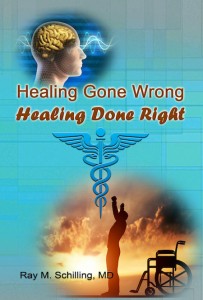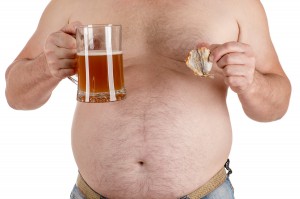Scientific papers describe how unhealthy added sugar is, so getting rid of sugar in your diet is the answer.
An article was published in CNN that describes a one-month sugar detox program.
Brooke Alpert, the co-author of the book “The Sugar Detox: Lose the Sugar, Lose the Weight — Look and Feel Great” describes the details of a sugar detox program.
The first three days of sugar detox
You need to go cold turkey for three days to eliminate any sugar to break the addiction cycle. During this time you may experience anxiety, sugar craving and moodiness.
You must not consume any added sugars during the first 3 days, but also keep away from fruit. Avoid starchy vegetables. This includes corn, sweet potatoes, peas and butternut squash. You also need to avoid dairy, because of the milk sugar in it. In addition avoid grains and alcohol. “You’re basically eating protein, vegetables and healthy fats”, says Alpert. You would enjoy a breakfast with 3 eggs any style. Lunch contains 6 oz. of poultry, tofu or fish. Add a green salad. For dinner your helpings are bigger, but it would be similar to lunch, perhaps with added vegetables. Snacks can be 1 oz. of nuts or a few slices of bell peppers with hummus. Your beverages: unsweetened tea, black coffee or water.
People should avoid sweeteners according to Alpert. Dr. Robert Lustig, professor of Pediatrics and member of the Institute for Health Policy Studies at the University of California, San Francisco agrees. He said that artificial sweeteners cause you to store more fat. Dr. Lustig added: “You also end up overeating later on to compensate for the increased energy storage”.
Day four of sugar detox
On day 4 the patient can reintroduce an apple. It will now taste a lot sweeter, because in the past sugar suppressed the natural fruit sugar taste. Full fat, unsweetened cheese and yogurt are also part of the diet. Alpert added: “Fat, fiber and protein slow the absorption of sugar, so taking out fat from dairy will make you absorb sugar faster.” Higher sugar content vegetables like carrots, snow peas and high-fiber crackers can be part of the diet in the second half of the first week. Those who like it can also add three glasses of red wine.
Second week of sugar detox
Add a serving of berries that are full of antioxidants. Also add an extra serving of dairy. You can also eat more starchy vegetables like winter squash and yams.
Third week of sugar detox
Barley, quinoa and oatmeal can now be added back. Grapes and clementines are now also allowable. Those who like wine can now add another glass of red wine. One ounce of dark chocolate per day can also be added. “Week three should be quite livable,” Alpert said.
Week four of sugar detox
You now can have two starches per day, like bread and rice. In addition you can enjoy high-fiber crackers. You can have 5 glasses of red wine per week. You may want to eat a sandwich. Once you have completed 31 days no fruit is off-limits. You can allow yourself the occasional indulgences like an ice cream or a piece of cake at a birthday party. “Because the addictive behavior is gone, having ice cream once or twice will not send you back to square one. The whole purpose is to give people control and ownership and a place for these foods in our life,” Alpert said.
Weight loss with sugar detox
There can be a lot of weight loss with a sugar detox; depending on how much sugar the person was consuming before the detox started. Alpert recalled that of 80 subjects who tested the sugar detox people lost between 5 and 20 pounds within 31 days. Many people reported that their belly fat was going and they had to readjust their belts. There were other things participants noted: brighter eyes, fewer dark circles around the eyes, clearer skin, more energy and not as many mood swings.
Many people are not properly educated; they reduce fat intake, but add sugar and start gaining weight. By cutting out sugar and adding healthy fats in their diet, they now feel satisfied. The sugar craving has disappeared.
Side effects of sugar detox
You may feel grumpy and weak. This likely is due to low blood sugar and a piece of fruit will help you overcome this. In other cases it could be due to too little fluid intake and when you drink some water, this feeling will pass. Make sure you have supportive family and friends through the first three-day of sugar detox. “You need people around you to help you be successful,” Dr. Lustig said. “The whole family has to do it together.” Some irritability is expected due to sugar and caffeine withdrawal. This will pass and get better with every day. There are persons who should not go on this program: diabetics, people who take medicine to control blood sugar and extreme athletes. Pregnant women should also not follow a sugar detox program.
Why it is important to limit sugar intake
The American Heart Association (AHA) clearly spelled out what the limits are for added sugars:
For men: a daily dose of 9 teaspoons of sugar from all foods,
For women: a daily dose of 6 teaspoons of sugar from all foods.
When you start reading labels, which I started to do since 2001, you realize that it is very easy to exceed these daily limits. What does this do? It makes your pancreas produce more insulin than is good for you. You start switching your metabolism into the metabolic syndrome, you gain weight, and you get inflammation. This is what the AHA is concerned about. You start developing high blood pressure; get high LDL cholesterol, high triglycerides, and atheromatous plaques in your coronary and brain arteries. Eventually you come down with a heart attack or a stroke.
In the last 100 years sugar consumption per person has skyrocketed.
This has led to a disbalance of our diet and it is because of this that we are facing the obesity wave now. All I am saying is replace sugar with stevia extract, which to my knowledge does not have the undesirable side effects that other sweeteners do and eat a Mediterranean type diet, which we know is balanced.
Watch the maximum recommended sugar intake per day set by the American Heart Association and balance your meals, and you will do a lot better than on the Standard American diet. The Mediterranean diet is anti-inflammatory.
Conclusion
We learnt about how a sugar detox can get you off sugar addiction. I also summarized why it is important to keep sugar consumption within limits set by the American Heart Association. Too much sugar can derange our metabolism, which is called metabolic syndrome. This can lead to diabetes. Eating a Mediterranean diet and keeping sugar intake low is the pathway to good health. It also keeps inflammation at bay.















